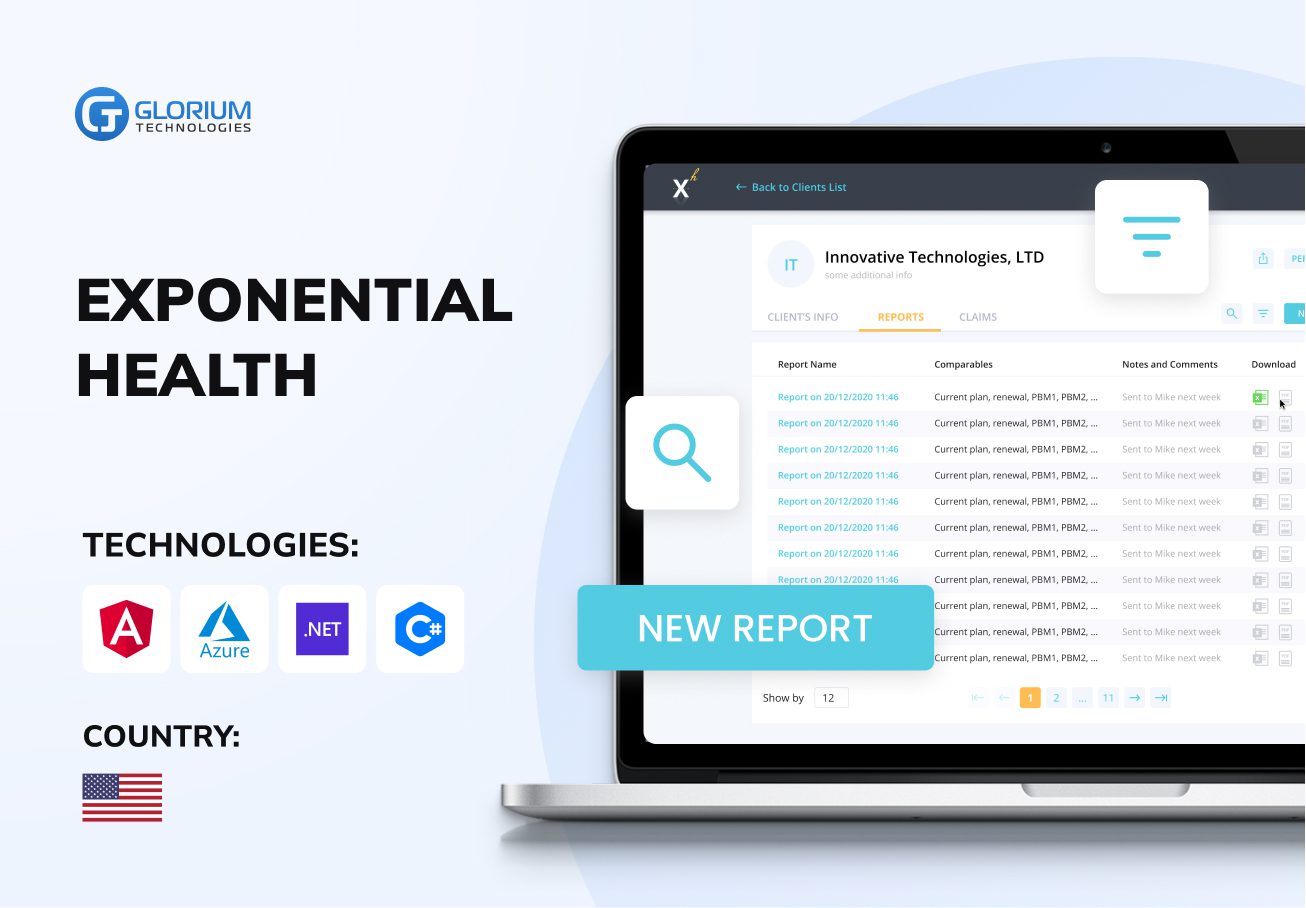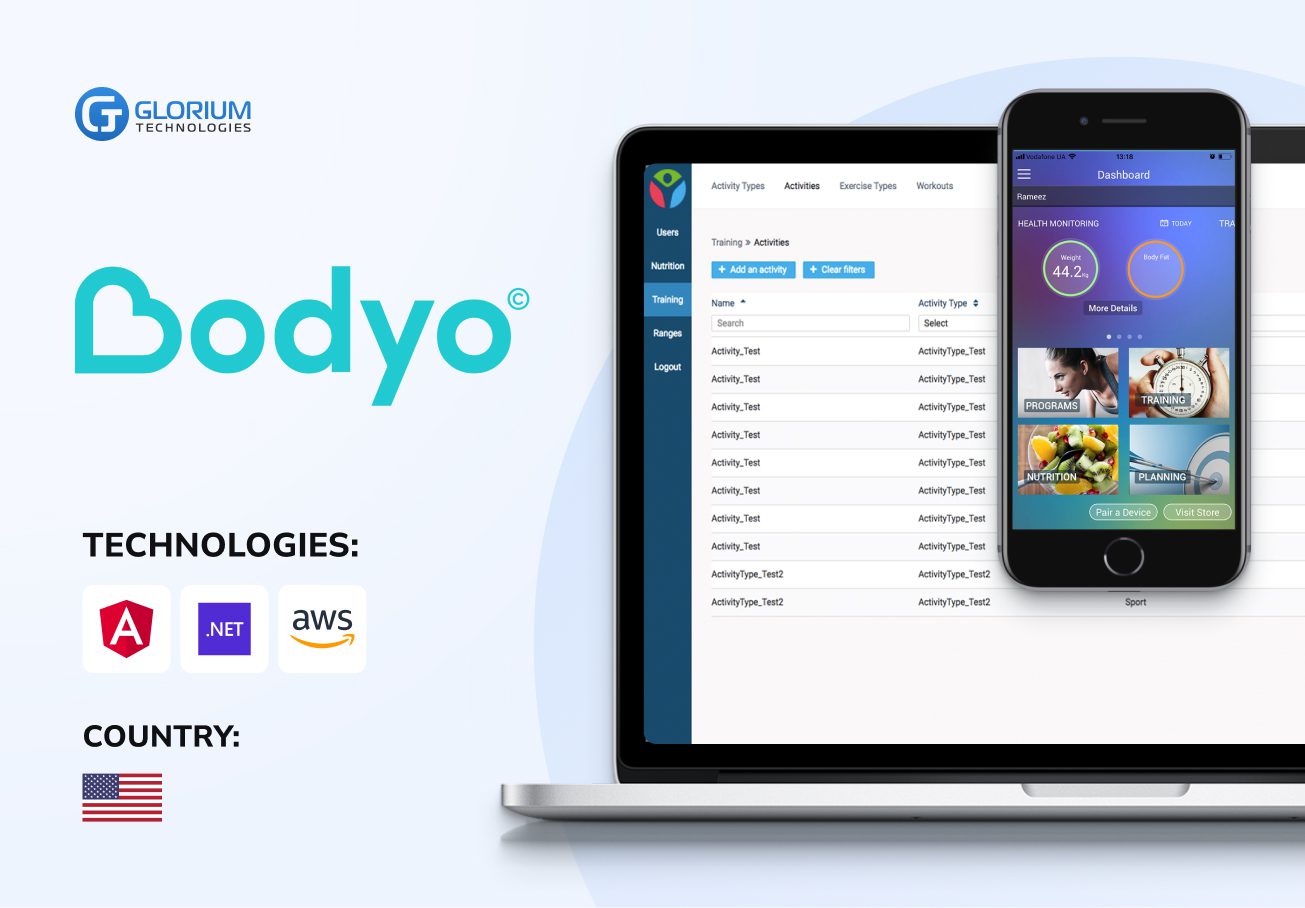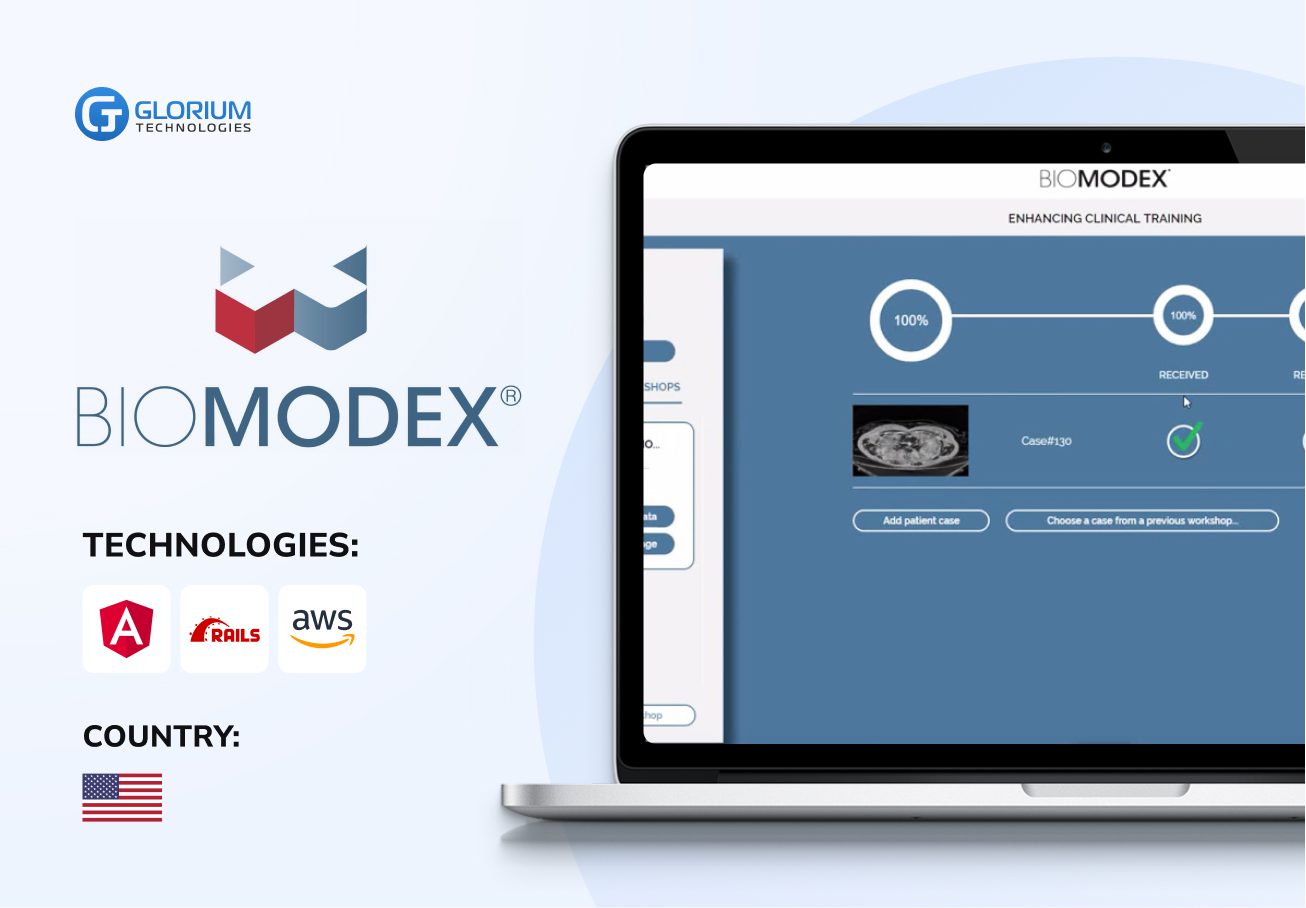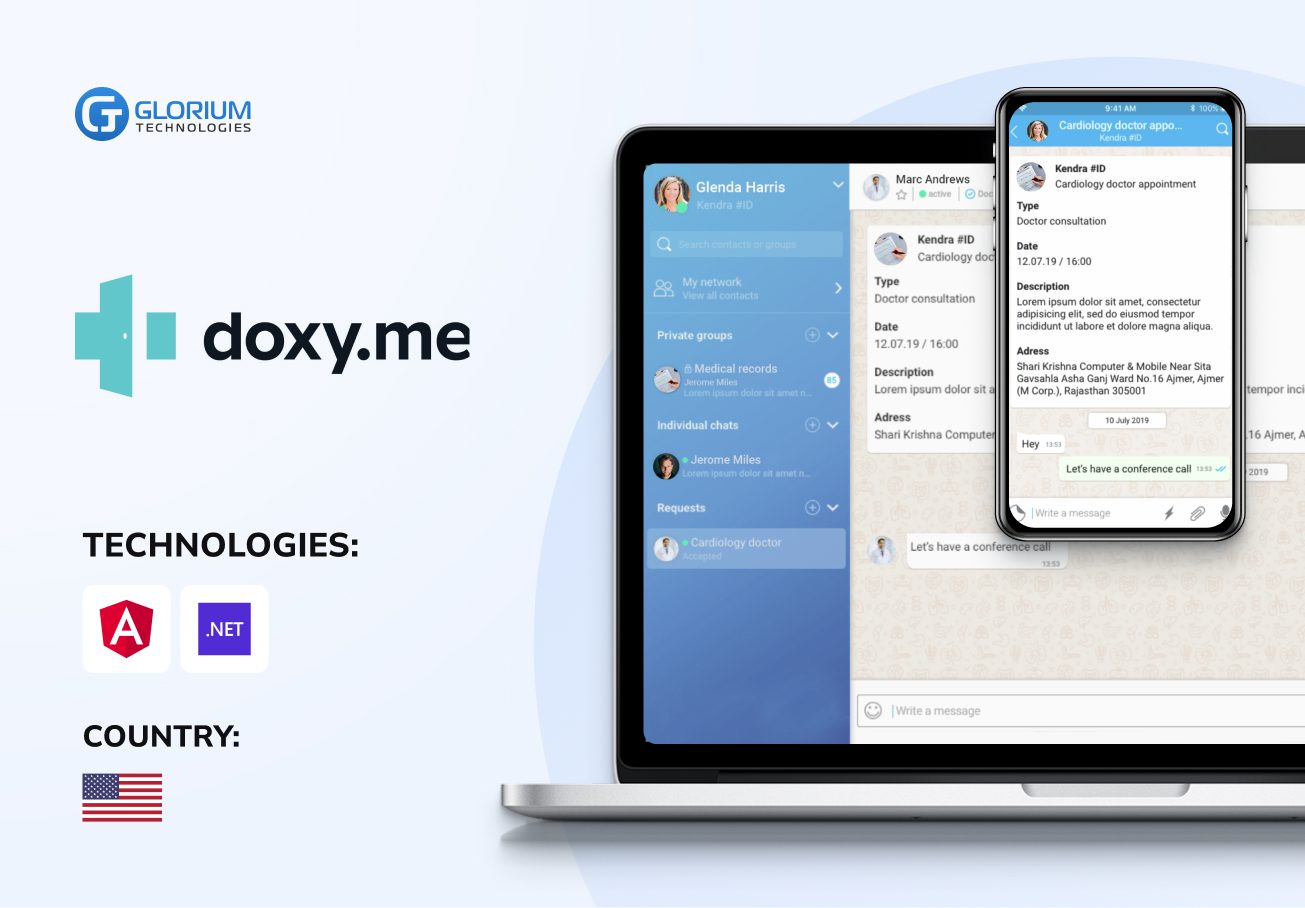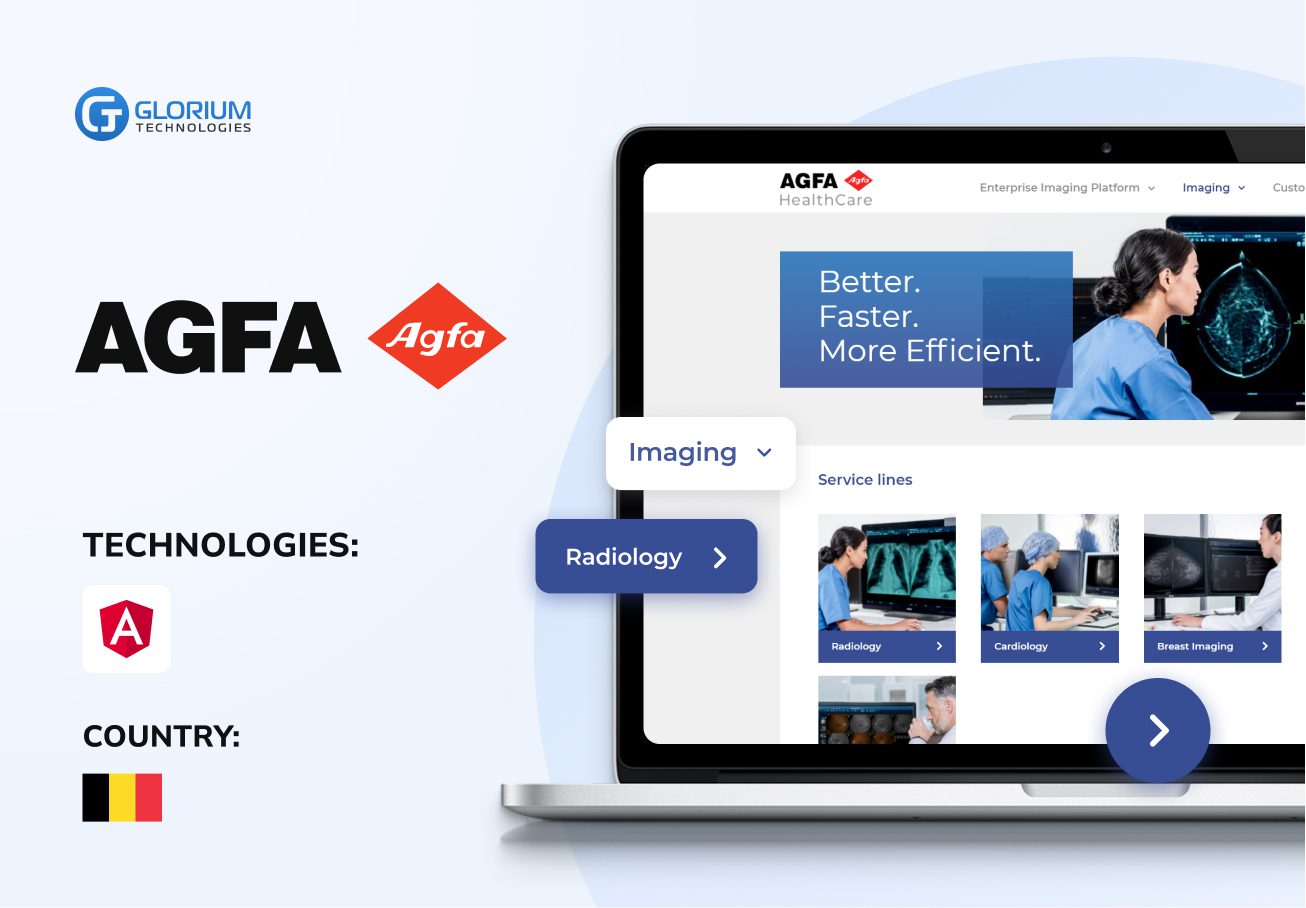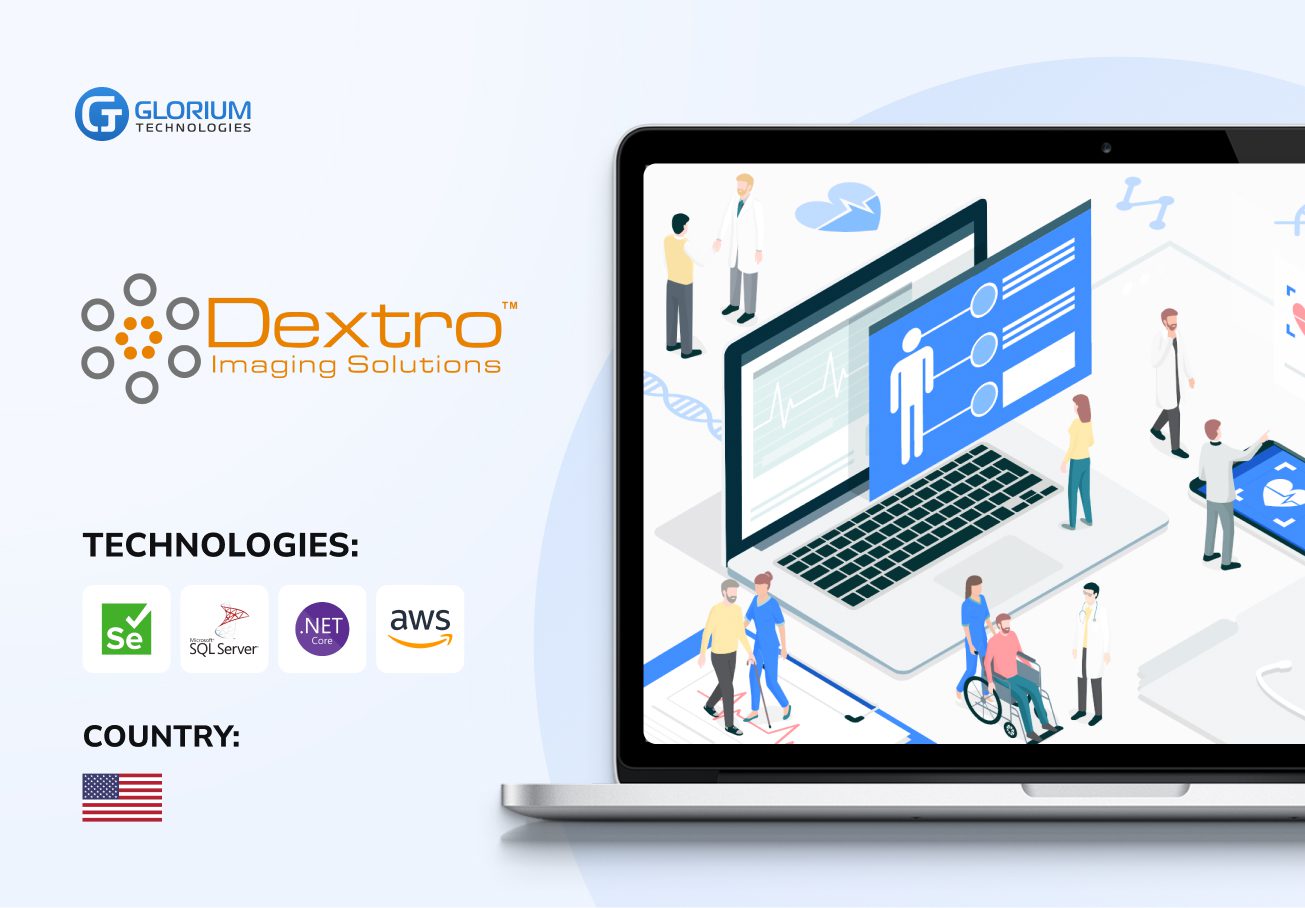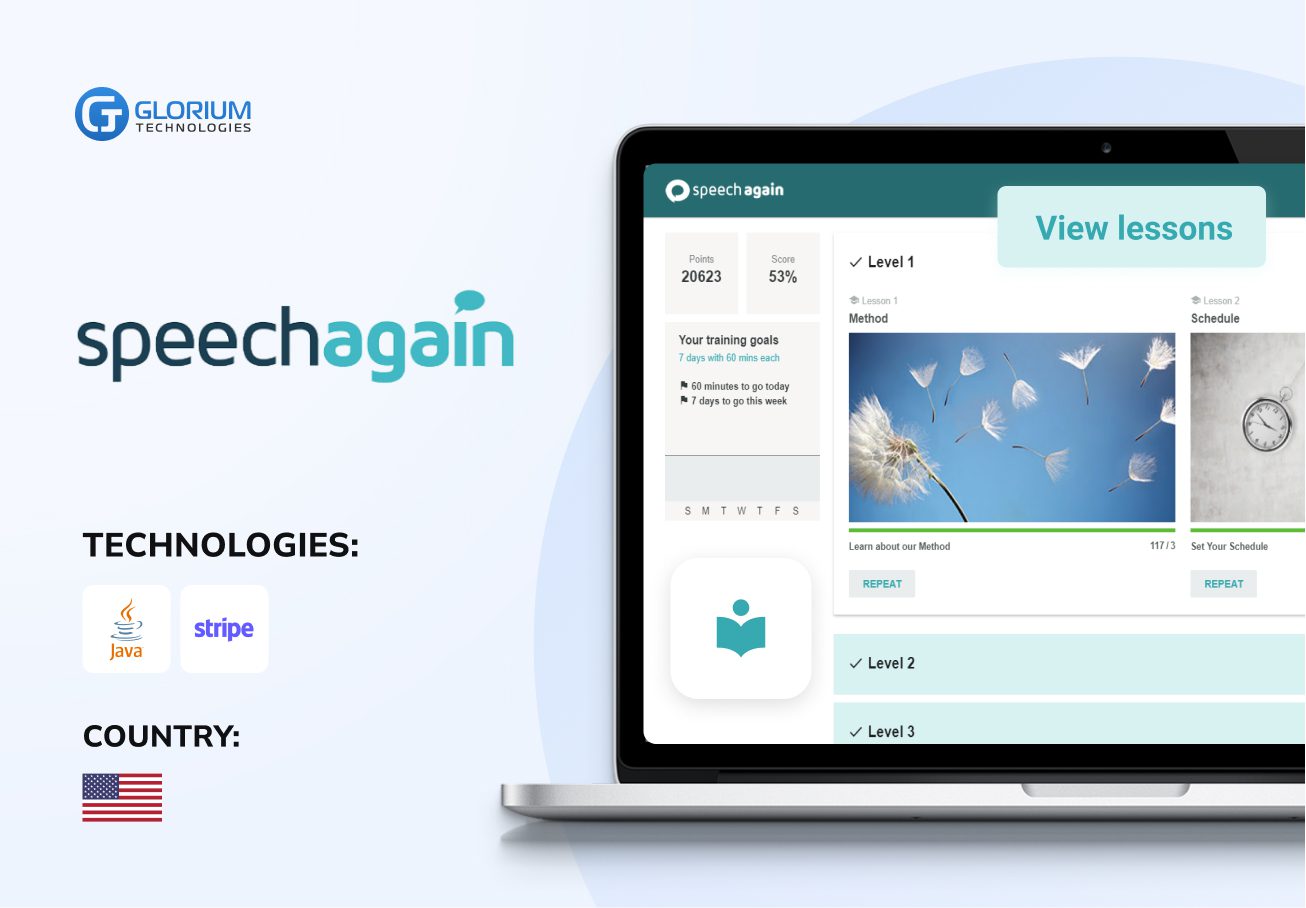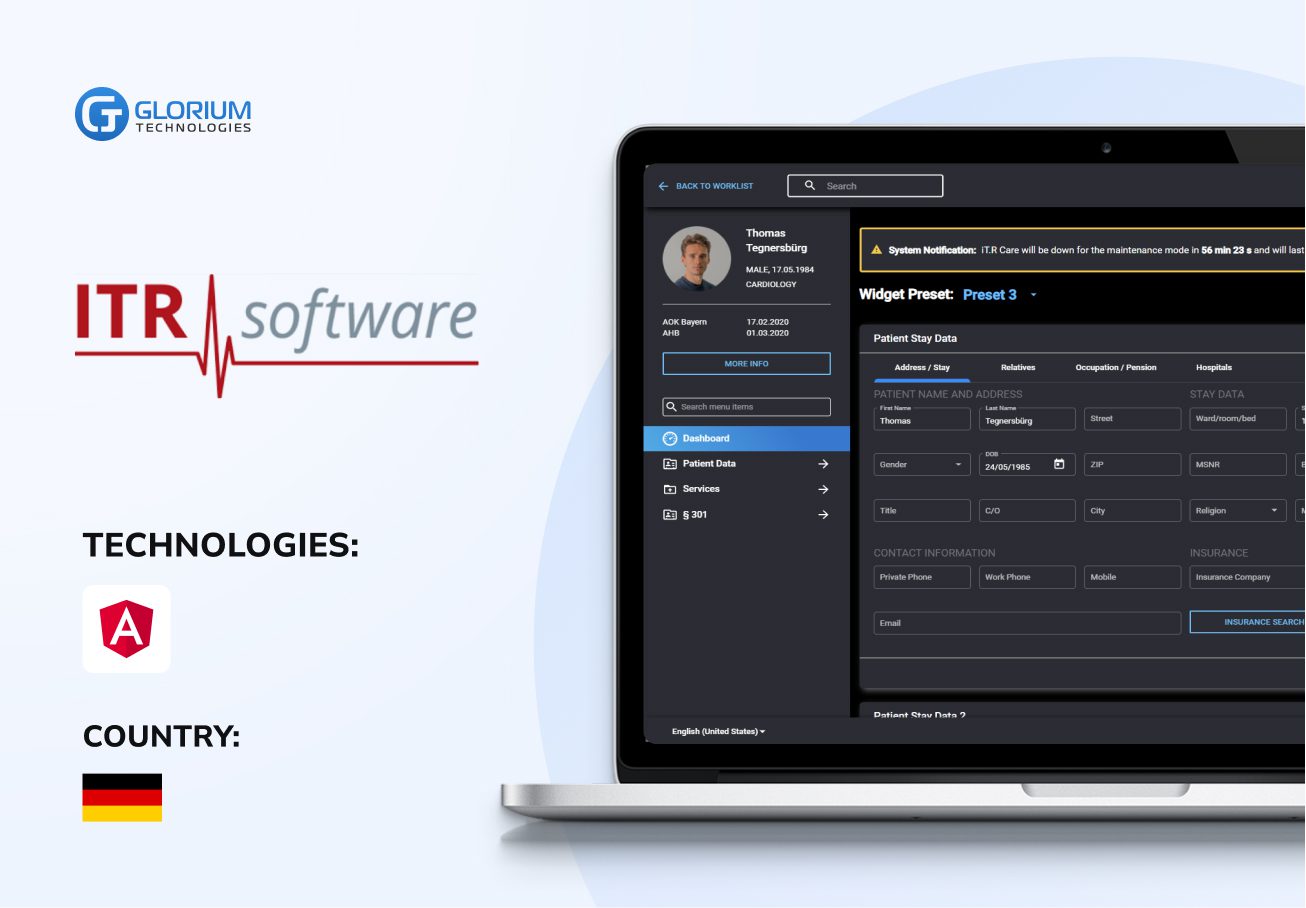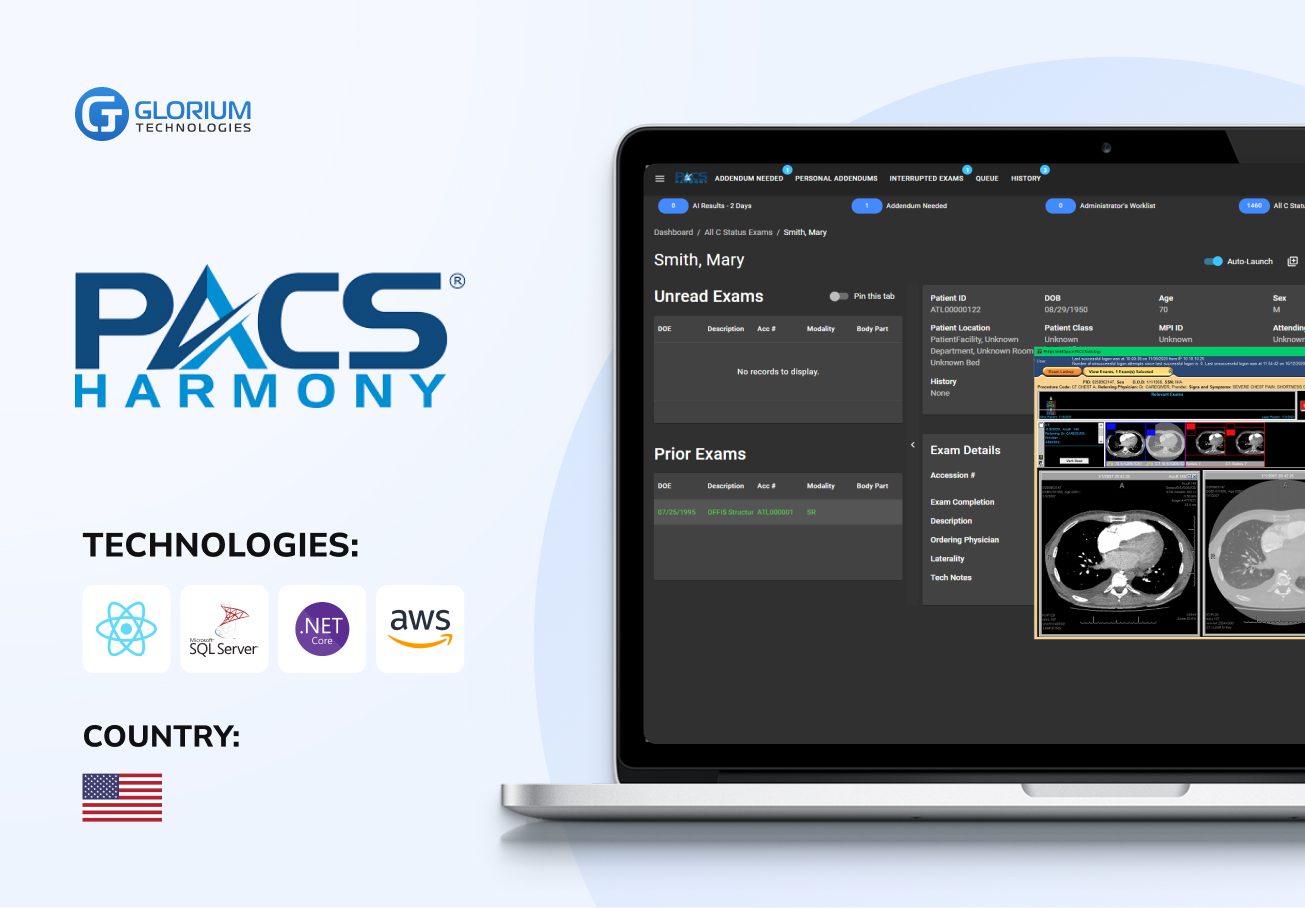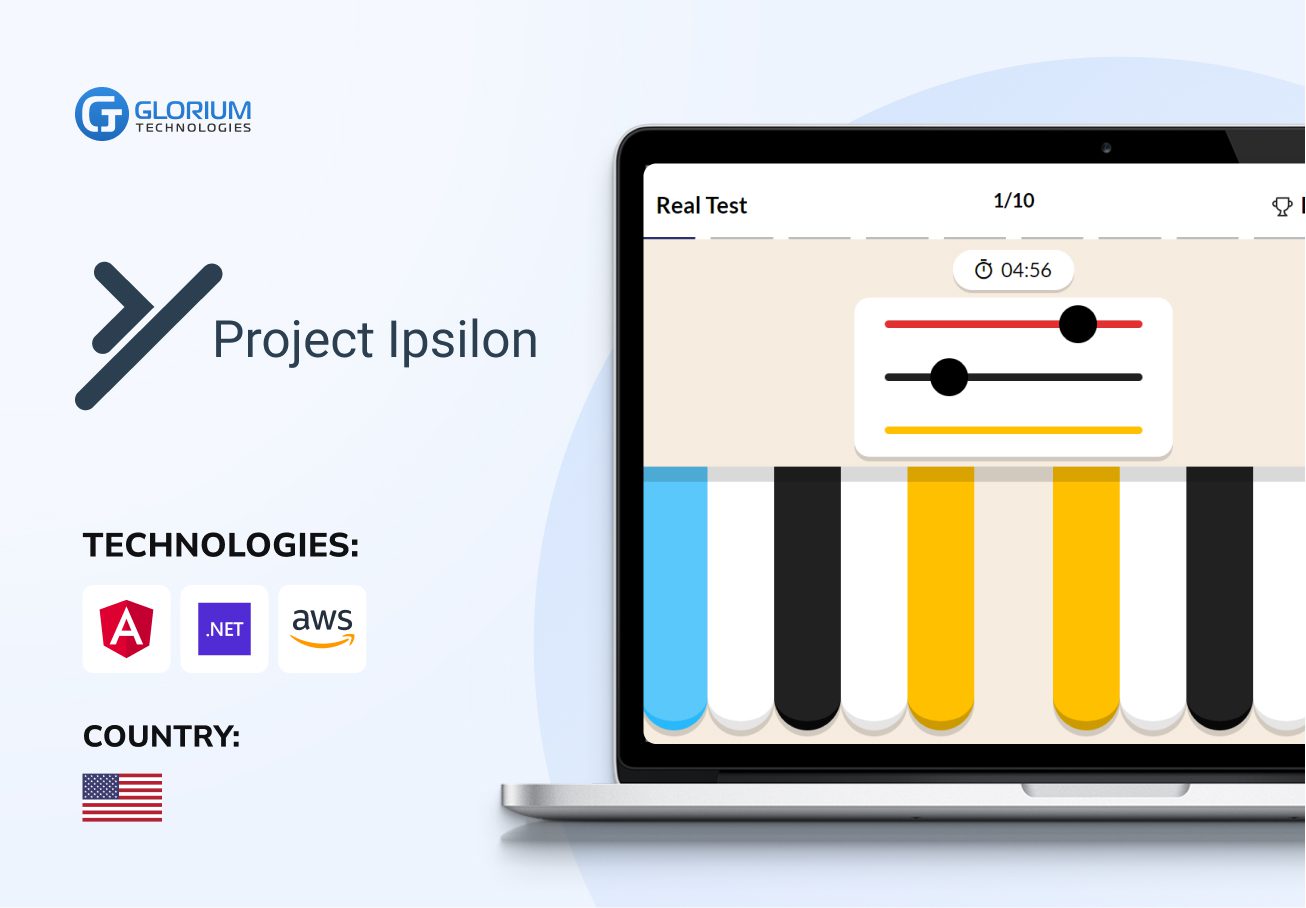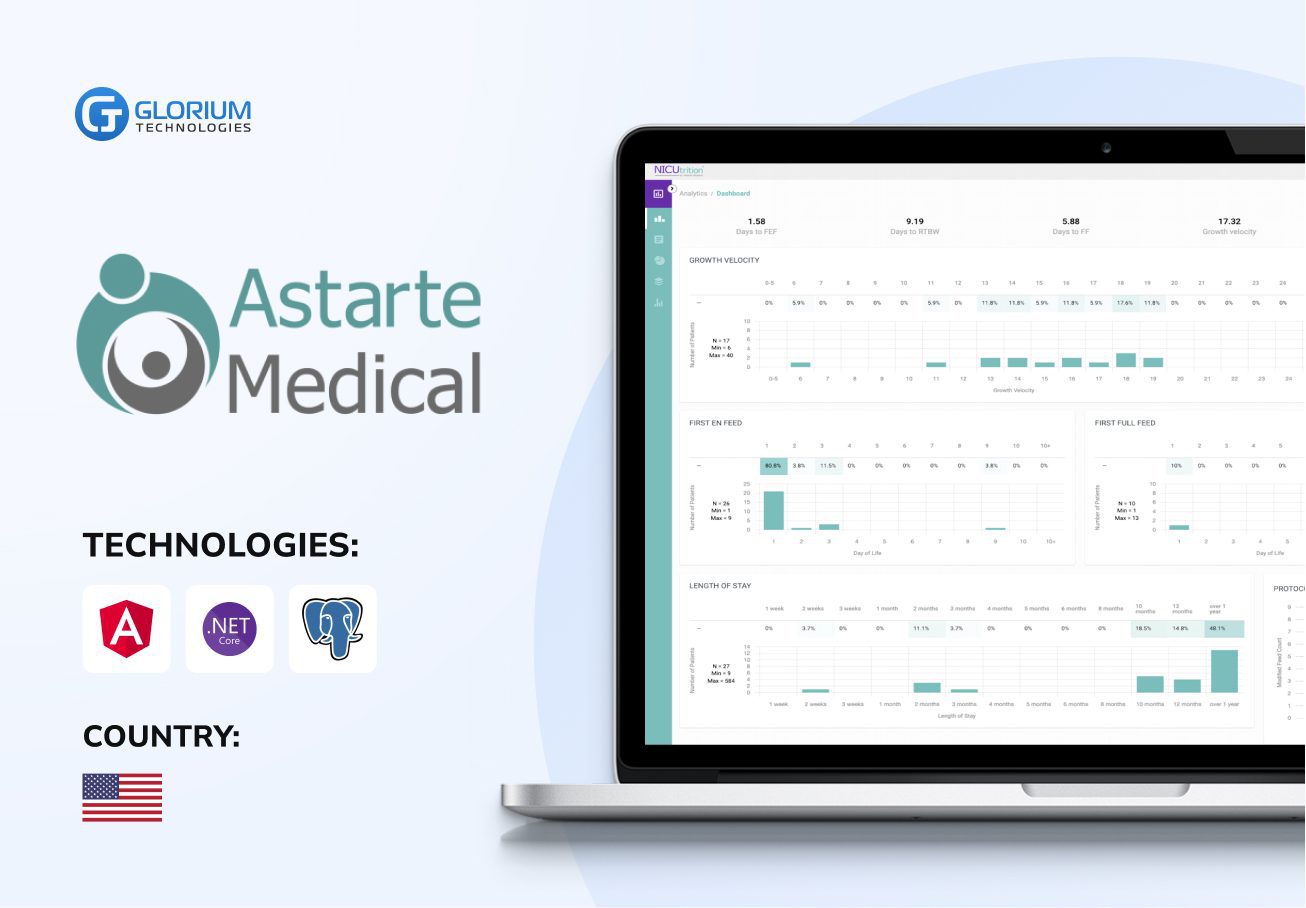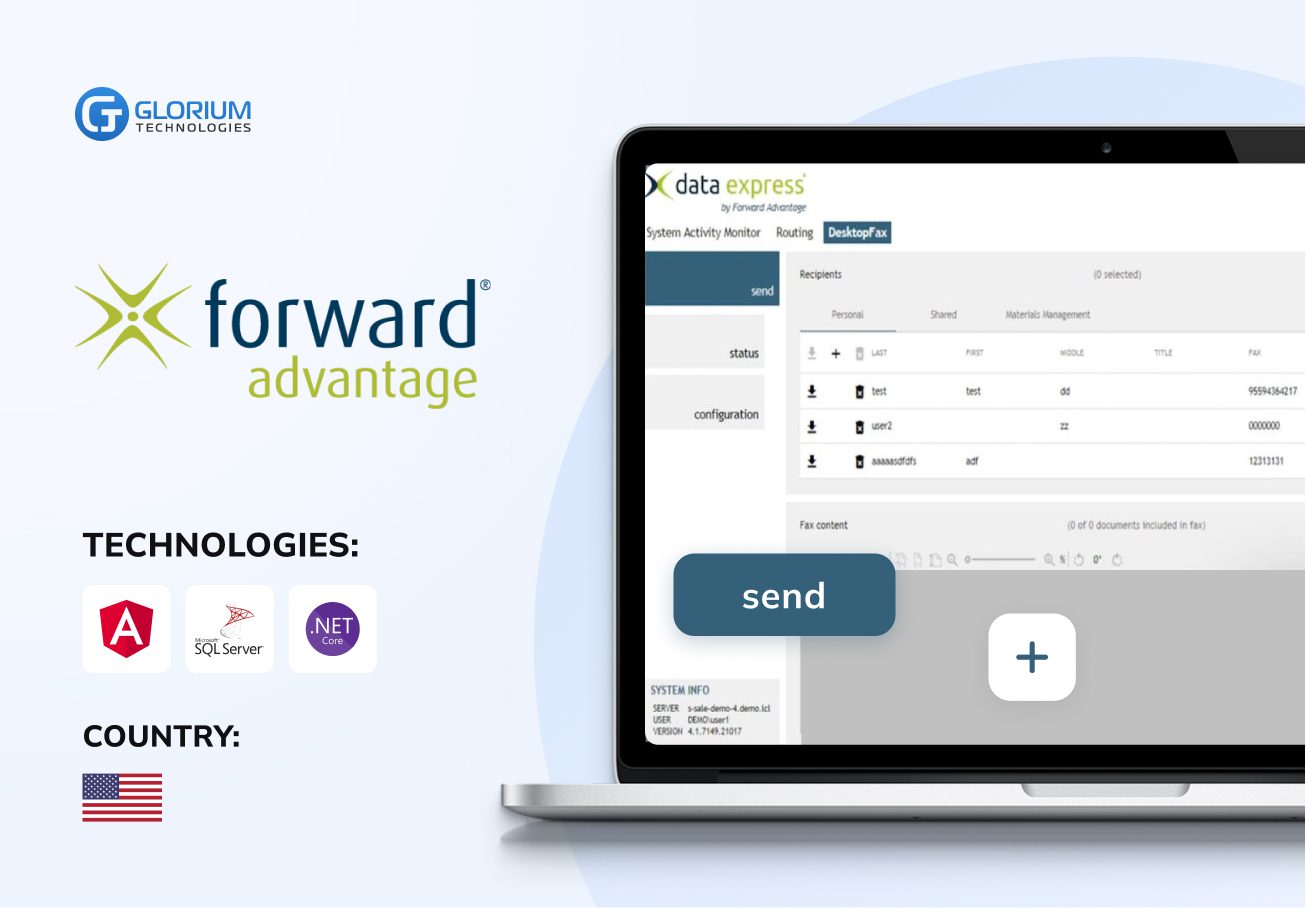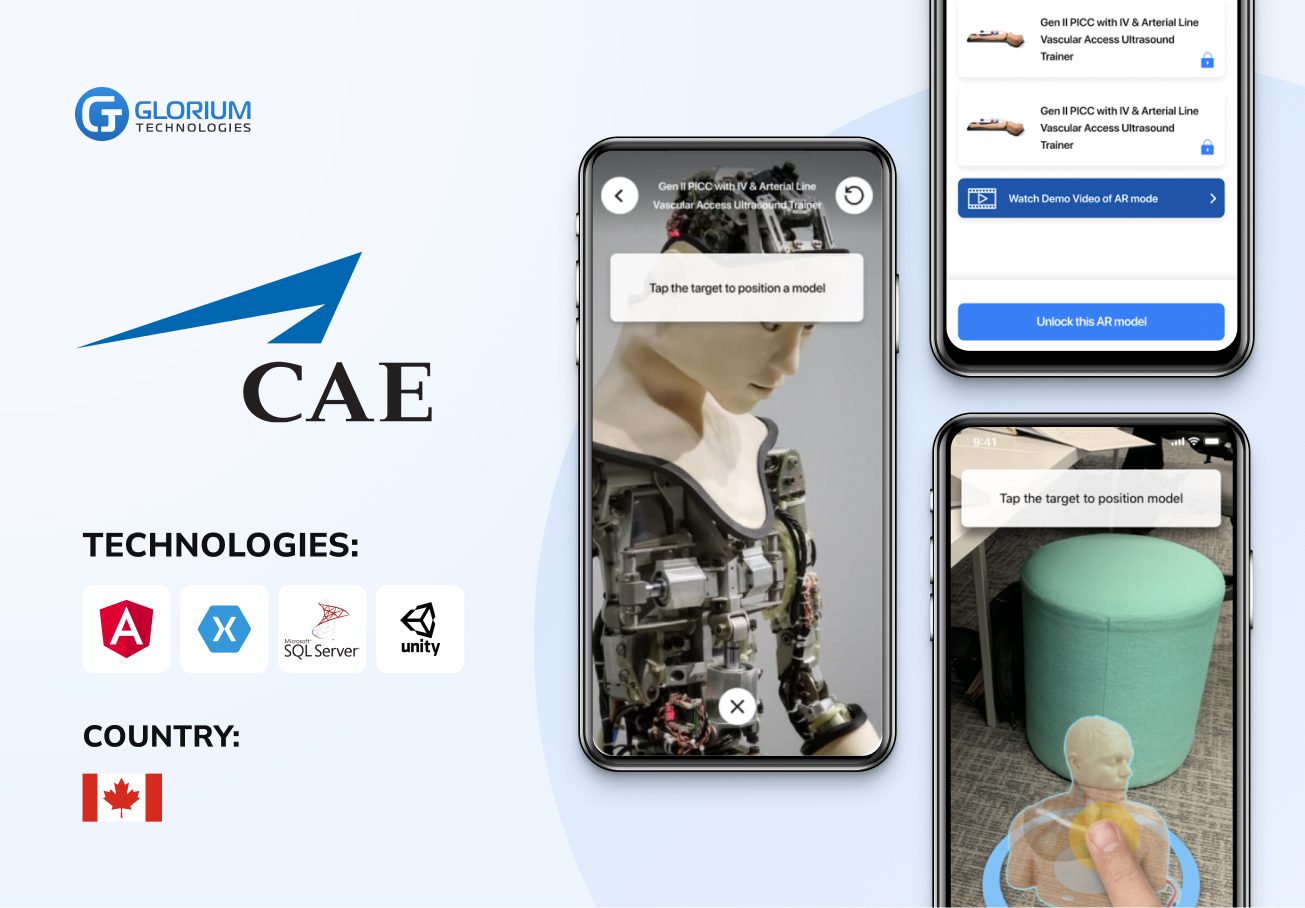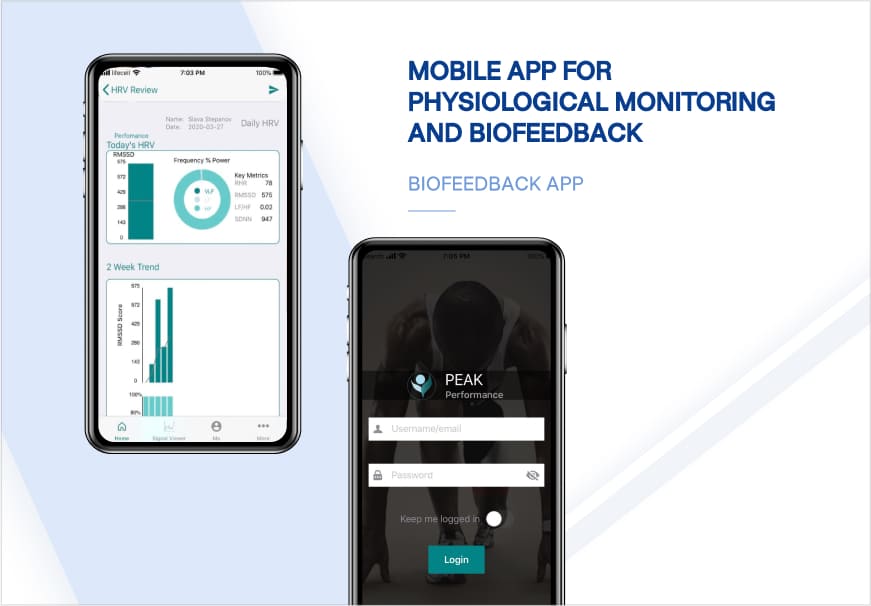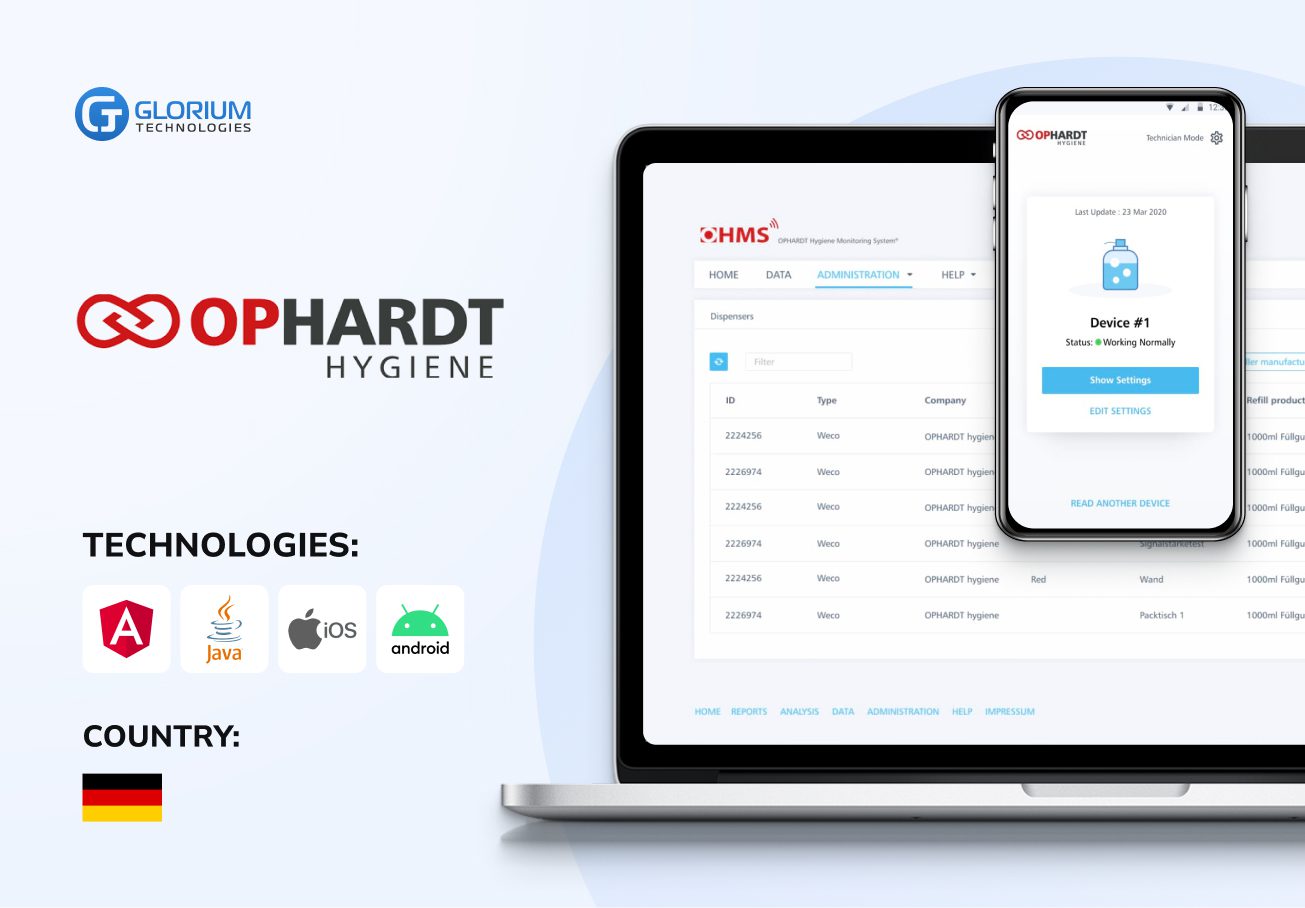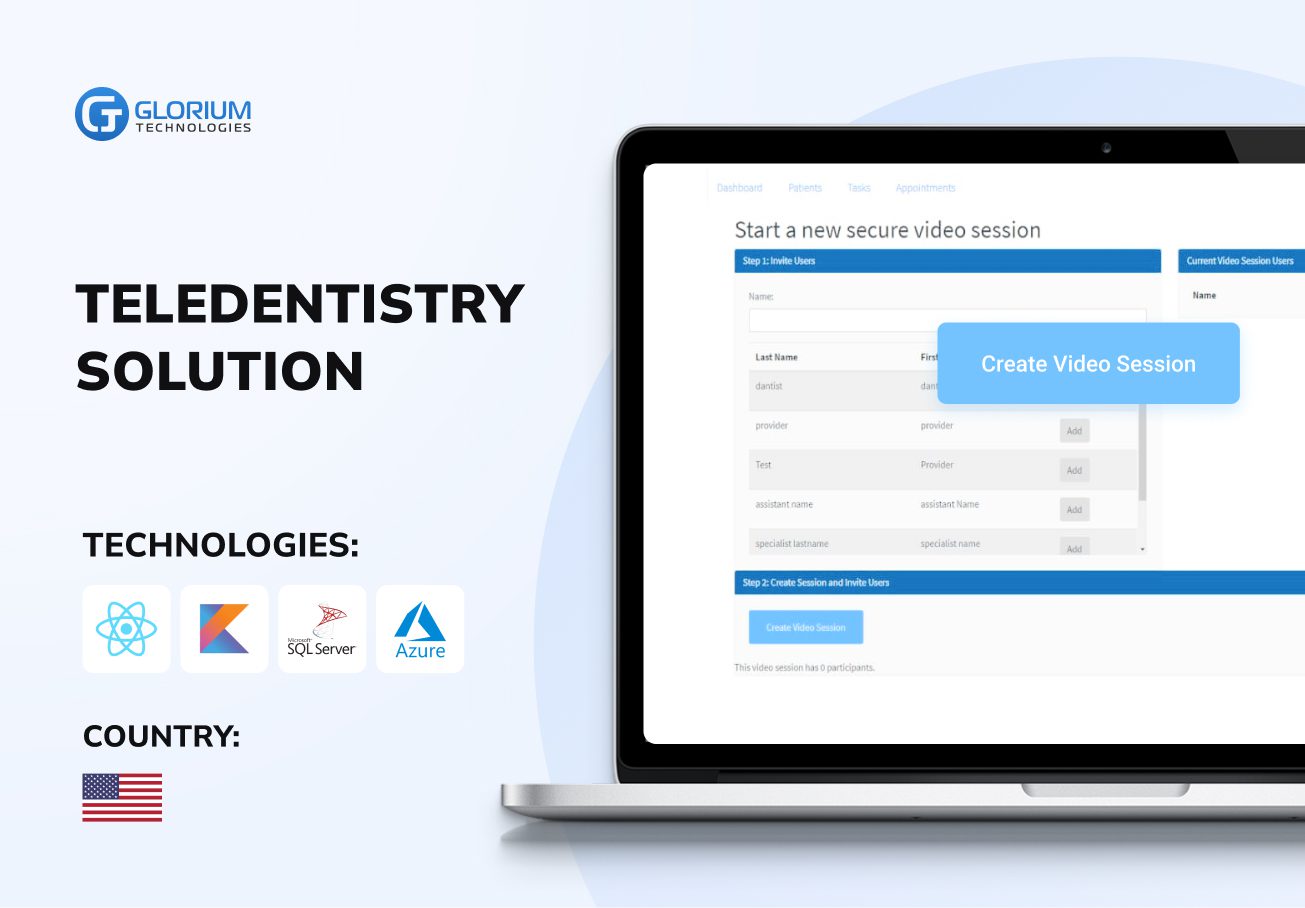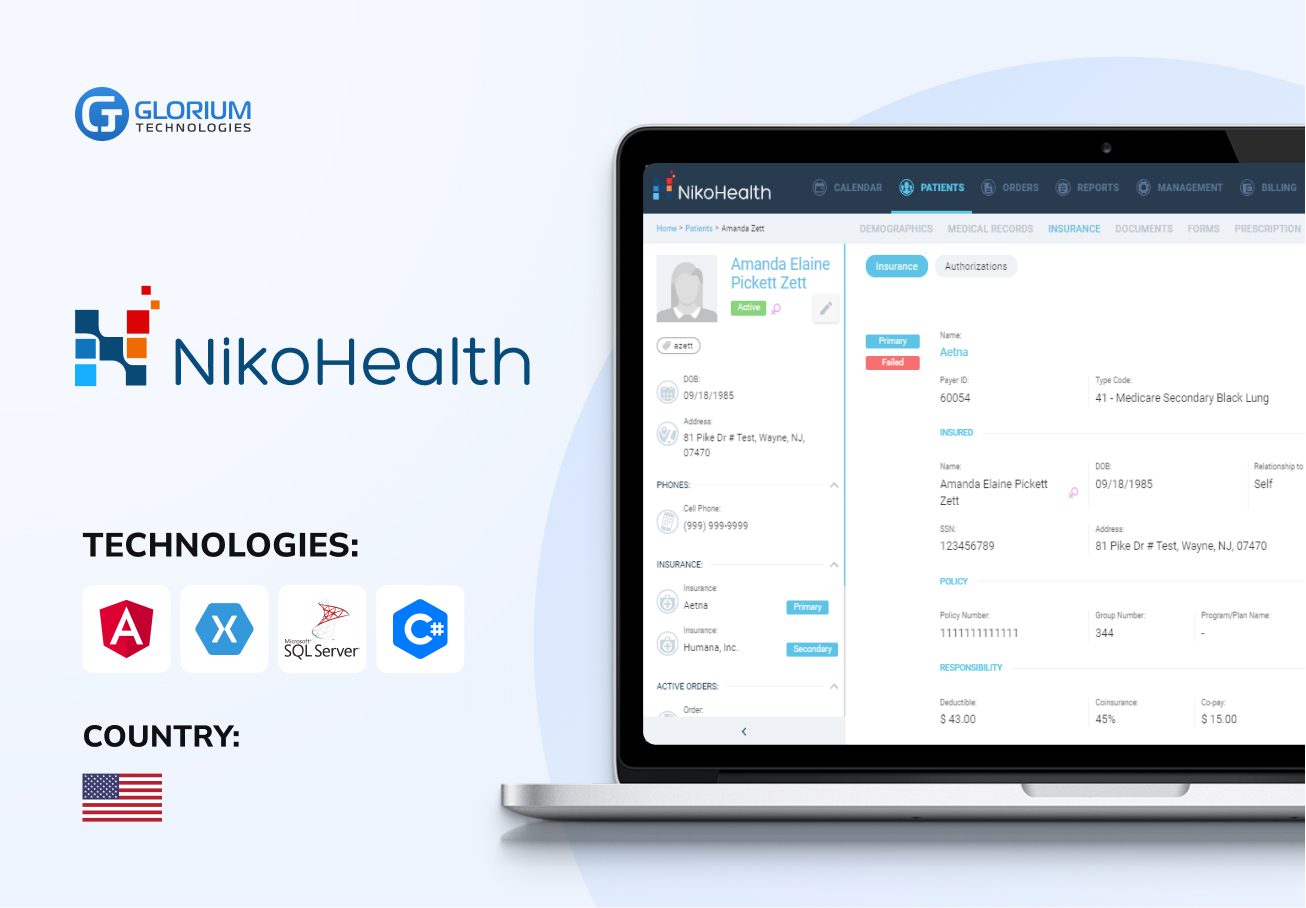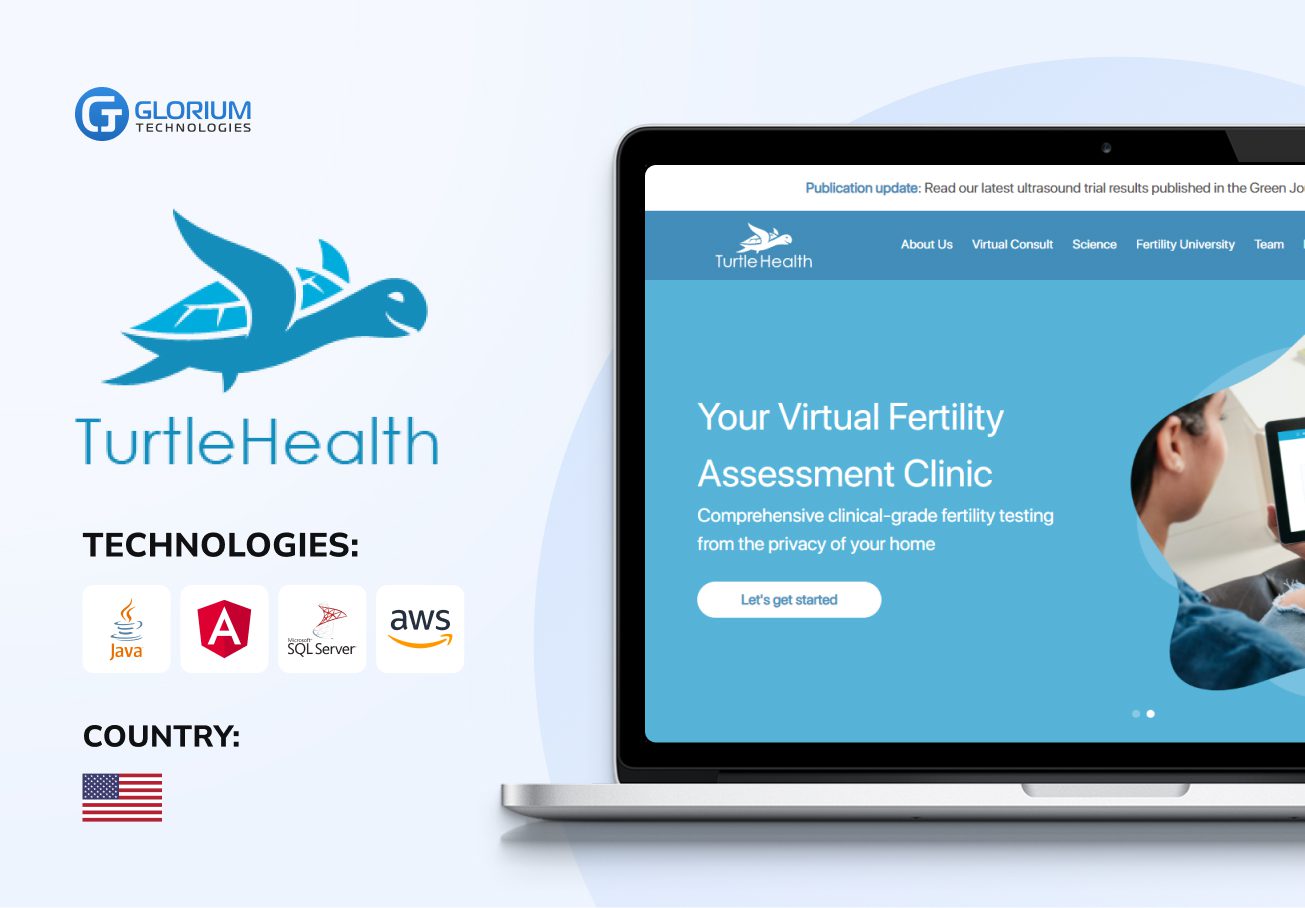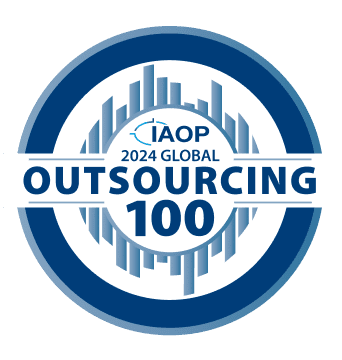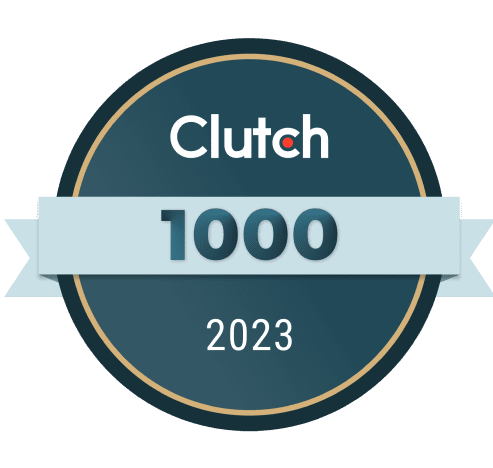HL7 Integration Services & Interface Development


FHIR & HL7 Integration Solutions
Complete Software Integrations for Healthcare Organizations
Integrate Various Data Formats Across Healthcare Systems with HL7 Solutions
HL7 Interface Software Development Solutions at Glorium Technologies
We enable seamless data exchange within Fast Healthcare Interoperability Resources (FHIR), the most recent industry framework for managing digital interactions. Additionally, we develop custom FHIR software to share and retrieve digital information, develop FHIR system modules, and provide other FHIR integration solutions.
Our solutions provide integration between the majority of communication protocols and APIs used in the industry, including SOAP/RESTful APIs, (S)FTP (file drop exchange), LLP, and others.
We design easy-to-use, secure apps that integrate with multiple data sources and deliver the requested information.
PACS and DICOM software solutions allow the sharing and distribution of data among viewers and readers while ensuring the interoperability of medical imaging data.
HL7 Compliance for EMR/EHR/PMS Software Development
We design HL7 solutions that ensure your software system remains compliant with industry standards in any of the following platforms:
- Laboratory Information Systems (LIS)
- Electronic Health Record (EHR)
- Practice Management Systems (PMS)
- HL7 Health Data & Management (HDMS)
- Health Information Systems (HIS)
- Electronic Medical Record (EMR)
- Personal Health Records (PHR)
How HL7 Facilitates Interoperability Throughout The Healthcare Industry
Recent healthcare clients








Our Clients Say about Us
Some clients' journeys
Who we are
Learn moreGlorium Technologies is a full-cycle app & software development company which covers specific client business needs and manage them with the help of the best possible technology solutions.
Since 2010, we have been inventing digital breakthroughs, helping startups and businesses come out on top in their markets.

Why choose us
Understanding HL7 Integration in Healthcare: Benefits, Pricing, Standards
Healthcare interoperability has been an essential, long-discussed subject in the healthcare industry. It evolved significantly from manual origins (physical transfer of patient charts and medical records) to fax-based transmissions and, finally, to digitalized versions of patients’ medical history that have become central to healthcare data exchange.
Various regulations, including the Health Insurance Portability and Accountability Act (HIPAA), have been established to enhance healthcare interoperability since the mid-90s.
HL7 was developed to solve communication challenges in healthcare by enhancing the quality and structure of clinical data. HL7 integration refers to adopting a set of global standards used by various healthcare providers, enabling better patient care and more streamlined operations.
How does HL7 Integration Work: Seamless Exchange of Clinical and Administrative Data
HL7 integration is a critical process in healthcare that facilitates the seamless exchange of information between different medical systems and applications. We want to discuss five essential elements that explain how HL7 integration works further.
Standardization of Clinical and Administrative Data
HL7 provides a framework for the standardization of medical data formats and communication protocols. This ensures that information, such as patient records, test results, and other clinical documentation, can be consistently understood across different systems.
Message Formatting
Messages contain specific information. HL7 integration ensures the structurization and formatting of messages to make them interoperable. Each message consists of segments and fields that conform to HL7 standards, making the data recognizable and interpretable by various healthcare systems.
Electronic Medical Record Transmission
These HL7 formatted messages are transmitted between systems using various communication protocols, such as MLLP (Minimal Lower Layer Protocol), commonly used for real-time data transfer. This allows for secure and immediate data exchange, ensuring that healthcare providers have access to the most current patient information.
Integration Tools and Middleware
Integration tools or middleware often facilitate HL7 integration as an intermediary that interprets, translates, and routes the electronic health records to the appropriate destinations. This middleware can manage multiple connections and protocols, providing a robust solution for healthcare systems to exchange data efficiently.
Continuous Monitoring and Compliance
HL7 integration requires ongoing management to ensure the integrity of electronic health records and compliance with healthcare regulations, such as HIPAA, in the United States. Systems must be monitored continuously for any issues that might compromise the quality or security of the data exchange.
In simpler words, HL7 integration helps healthcare organizations improve patient care by enabling quick access to comprehensive patient data across different platforms.
Benefits of HL7 Integration for Healthcare Organizations
The healthcare sector globally deals with immense complexity and navigates stringent regulations while drowning in an ever-growing sea of data. For instance, hospitals are estimated to produce about 50 petabytes of data each year, which can be overwhelming to manage and keep track of. This is where HL7, or Health Level Seven integration, comes into play.
HL7 integration offers a solution to these challenges by standardizing the exchange of information across medical facilities and brings the following benefits:
- Enhanced interoperability – HL7 improves interoperability across healthcare IT systems by standardizing data exchange formats and protocols
- Improved efficiency – HL7 integration automates data exchanges, reducing manual data entry and errors, thereby speeding up operations and decision-making processes
- Better patient care – Real-time, reliable data exchanges allow healthcare providers immediate access to comprehensive patient records, improving decision-making and patient care quality
- Cost savings – HL7 integration streamlines data processes, minimizing errors and redundancy, which cuts operational costs and reduces financial losses
- Regulatory compliance – HL7 supports compliance with regulatory standards such as HIPAA by facilitating secure and confidential data transfers, thus minimizing legal risks
- Scalability – HL7 provides a framework for integrating new technologies without disrupting existing systems, enabling healthcare providers to scale more quickly.
- Secure data transmission – HL7 protocols enhance data security and integrity by standardizing formats and employing secure messaging, ensuring the safe transmission of patient information.
HL7 Integration: A 7-Step Guide for Healthcare Organizations
Implementing HL7 integration in a healthcare system is a complex process that requires careful planning and execution. We recommend consulting with a professional team that can help you implement HL7 effectively. Meanwhile, please take a look at our small guide on HL7 integration.
Assessment and Planning
- Identify Needs: Determine what information needs to be exchanged between systems (e.g., patient data, lab results, billing information).
- Scope of the Project: Define the scope of the integration project, including the systems involved and the data flows between them.
- Create a Project Team: Assemble a team with expertise in clinical workflows, IT, and HL7 standards.
Understanding HL7 Standards
- Learn HL7 Specifications: Familiarize the team with the HL7 standards relevant to the project (such as HL7 Version 2.x, HL7 Version 3, or FHIR).
- Define Data Structures: Map out the data structures that will be used, ensuring they comply with HL7 standards.
Design and Development
- Design Interface Architecture: Sketch out the integration’s architecture, including how systems will connect and communicate (using HL7 interface engines, APIs, etc.).
- Develop the Interfaces: Program the interfaces that translate and route the data according to the HL7 standard. This often involves using middleware or an integration engine.
Testing
- Internal Testing: Perform unit and integration testing to ensure the interfaces work as expected within a controlled environment.
- End-to-end Testing: Conduct end-to-end testing with all connected systems to validate the entire data flow.
- User Acceptance Testing: Involve end-users to test the system in real-world scenarios to confirm that it meets their needs.
Implementation
- Deploy Integration: Roll out the integration in a live environment.
- Monitor and Optimize: Monitor the integration for any issues and optimize performance as needed.
Maintenance and Compliance
- Regular Updates: Keep the system updated with the latest HL7 standards and security patches.
- Compliance Checks: Regularly review the system to ensure it complies with health data regulations such as HIPAA.
Training and Support
- Training: Train end-users and IT staff on how to use and maintain the integration.
- Provide Ongoing Support: Offer continuous support to address any issues or questions that arise post-implementation.
HL7 (Health Level Seven) Integration using Application Programming Interfaces (APIs)
HL7 Integration using APIs represents a modern approach to ensuring that different medical centers can communicate seamlessly with one another.
APIs are sets of rules and specifications that software programs can follow to communicate with each other. In the context of HL7, APIs facilitate the reliable exchange of medical information between disparate healthcare IT systems, such as EHRs, laboratory information systems (LIS), and billing software.
APIs in HL7 integration align with the latest HL7 FHIR (Fast Healthcare Interoperability Resources) standards. FHIR is designed to make implementation easier and more effective using modern web technologies such as JSON, XML, HTTP, OAuth, and REST. This API-based standard allows for the quick assembly of interoperable solutions that can easily be adapted as healthcare facilities’ needs evolve. APIs provide a flexible, scalable method for data exchange, enabling health systems to enhance their interoperability and data-sharing capabilities.
Implementing HL7 through APIs allows healthcare applications to access shared data more fluidly and in real time. For instance, when a patient is admitted to a hospital, their personal health information can instantly be pulled from other medical facilities through API calls.
The adaptability of API-driven HL7 integration supports a wide range of use cases, from patient care and billing to compliance reporting and beyond, demonstrating its versatility and critical role in modern healthcare IT infrastructures.
Why Healthcare Providers Outsource HL7 Integration?
HL7 integration is a complex process, and many medical organizations and healthcare industry players prefer to outsource the HL7 interface development services.
Here are several compelling reasons that might help you understand the need for hiring a professional team:
Effective Integration of HL7 Interface Requires Expertise and Experience
HL7 integration involves complex, specialized knowledge that typical healthcare IT staff may not possess. Outsourcing to experts in HL7 standards can ensure that the integration meets all technical requirements and is optimized for efficiency and compliance. These specialists have experience navigating the intricacies of HL7 interfaces, which can significantly reduce the likelihood of costly errors.
Outsourcing HL7 Integration is Cost-Efficient
Developing the capability in-house to manage HL7 integrations can be costly. It requires investment in technology, training, and possibly new hires. Outsourcing can be a more cost-effective option because it leverages the vendor’s resources and spreads the high costs of specialized software and skilled personnel across multiple clients.
Outsourcing Gives Medical Organizations a Chance to Focus on Core Business
By outsourcing HL7 integration, healthcare providers can focus on their primary mission—patient care—rather than diverting valuable resources to manage complex IT projects. This allows medical facilities to concentrate on improving patient outcomes without being bogged down by the technical aspects of data integration.
Outsourcing HL7 Integration Helps Mitigate Risks Associated with Data Breaches
Aside from streamlining data exchange and data integration, HL7 integration reduces non-compliance with health information regulations such as HIPAA. Vendors specializing in HL7 are better equipped to implement robust security measures and ensure the integrations comply with all relevant laws and standards.
Professional HL7 Integration Services Offer Scalability and Flexibility
This can take a lot of work to achieve with an in-house team. As healthcare providers grow and their needs evolve, outsourcing partners can quickly adjust and scale the integration solutions to meet changing demands without significant disruptions or downtime.
HL7 Integration Service Providers Have Access to Advanced Technology
To provide an effective HL7 interface and maintain a competitive edge, HL7 integration providers continually invest in the latest technologies and updates. By outsourcing, healthcare providers gain access to advanced technologies and methodologies without the direct investment in ongoing research and development.
Outsourcing HL7 Integration Can Improve Implementation Speed
Outsourced HL7 experts can typically complete integrations faster due to their focused expertise and experience with similar projects. This speed in deployment can be crucial for healthcare organizations looking to enhance their IT capabilities and deploy the HL7 interface quickly.
The Takeaway
Now that you have a sneak peek at the HL7 integration process, you know how essential it is to keep up with technological developments in the healthcare sector. If you’re still hesitant, remember that healthcare data integration standards must have interoperability to improve your workflow.
As we said before, developing the HL7 interface requires a team of professionals with years of experience in the medical industry. Glorium Technologies can help you with HL7 integration and provide you with seasoned experts in the field.
You might have additional questions, so contact us and request a free consultation.
What is HL7?
HL7 is a programming language that enables the standard, consistent and uniform exchange and processing of medical data between medical systems. HL7 standards are developed and maintained by the healthcare IT standard-setting authority, HL7 International. It facilitates the reliable exchange of high volumes of pre-defined patient and clinical data across healthcare apps.
How many versions of HL7 exist?
HL7 2.8 is the foremost standard and is currently the most applicable. The HL7 version 2.x series includes 2.1 through 2.8.2, with the standards designed to be backward compatible. Earlier versions of HL7 2.x remain the most extensively utilized across healthcare systems. However, it is advisable for middleware solutions to also support the newer releases, namely versions 2.7.1, 2.8, 2.8.1, and 2.8.2, to ensure comprehensive compatibility and functionality.
Why is software development a must for modern healthcare providers?
Software development enables medical organizations to implement advanced digital solutions, streamline operations, improve patient care, and ensure medical data compliance with regulatory standards.
Software tools that we design at Glorium Technologies allow for improving healthcare workflow in hospitals, private practices, medical offices, labs, pharmacies, and other healthcare providers.
Our experience shows that medical professionals enjoy custom medical software products since they directly eliminate customer dissatisfaction and answer their requirements. Custom-made software allows medical professionals to improve internal processes, enhance medical data interoperability, and foster an effective interaction channel with patients.
Statistically, software solutions in the healthcare industry Reduce medical personnel fatigue and stress, improve medical data tracking and reporting, and ensure compliance with regulatory standards.
Why is data interoperability essential in healthcare?
Data interoperability is essential in healthcare because it allows for seamless sharing of patient information across different healthcare systems, including legacy systems and newer providers. This integration enhances the efficiency of medical services, improves patient outcomes by providing timely and accurate data for care decisions, and reduces redundant procedures and costs.



